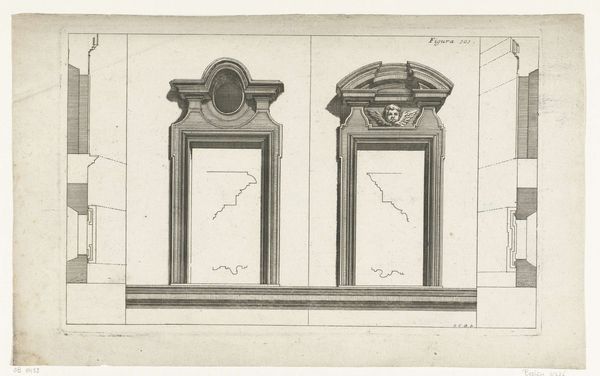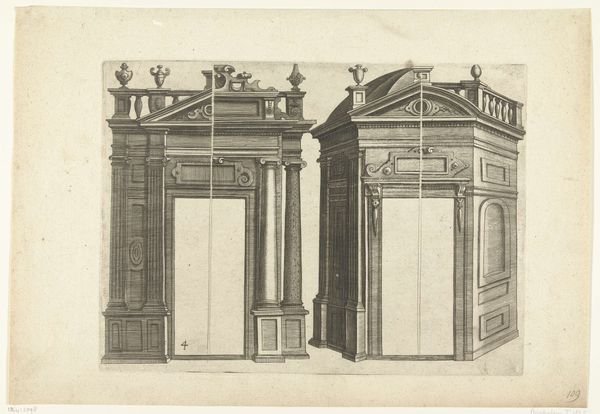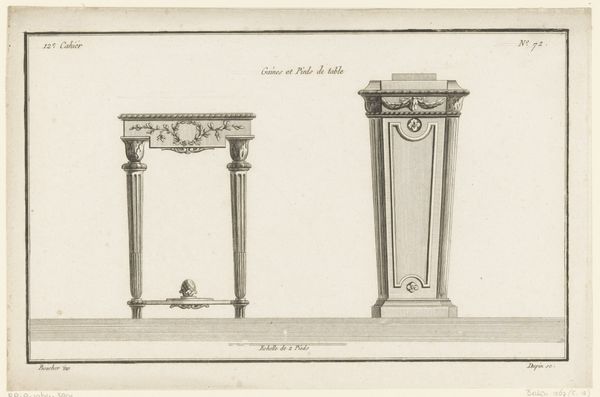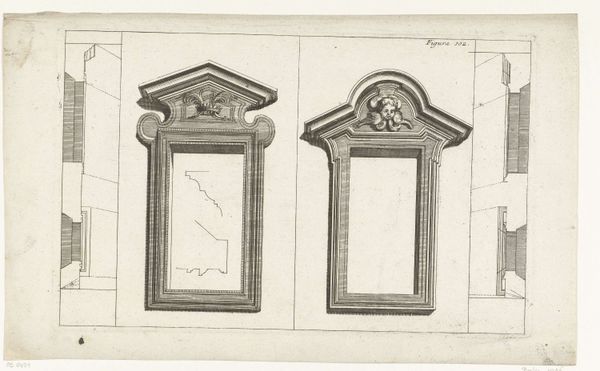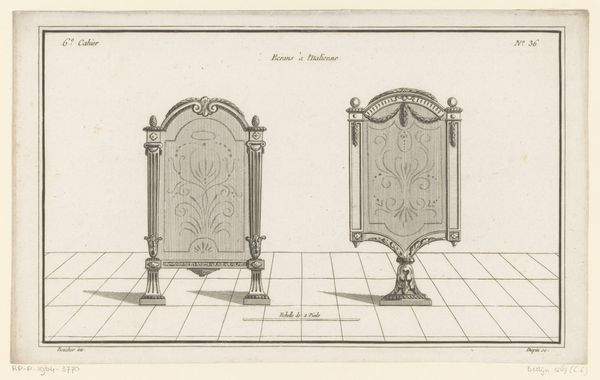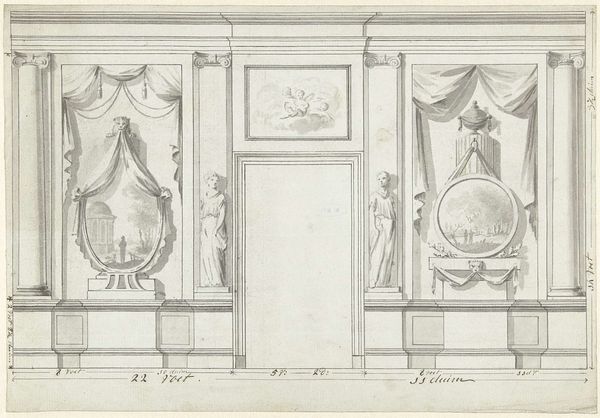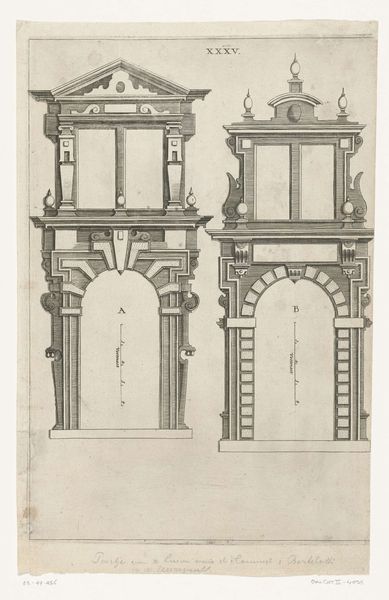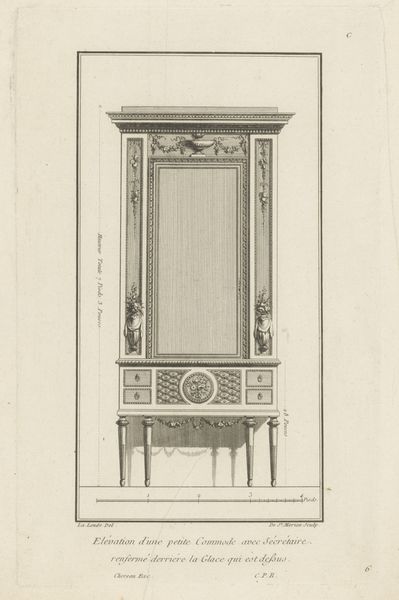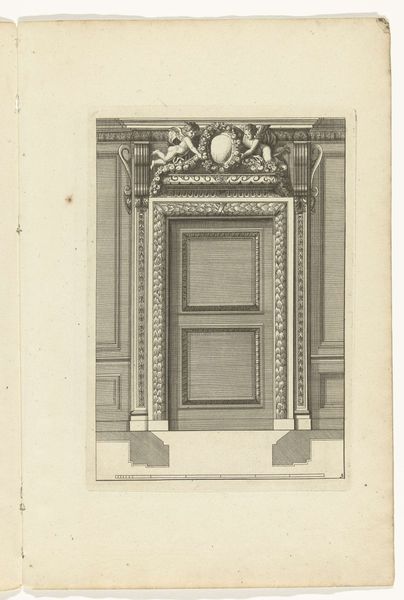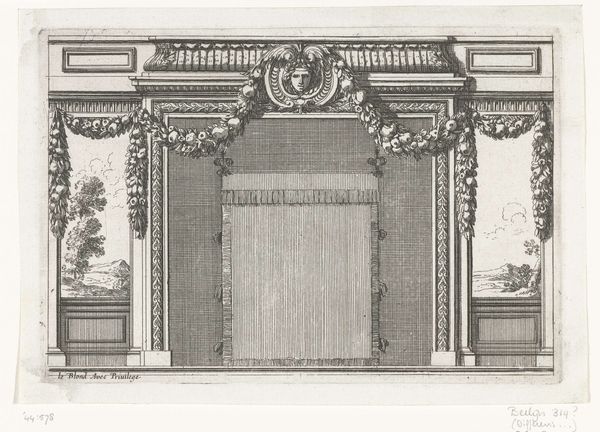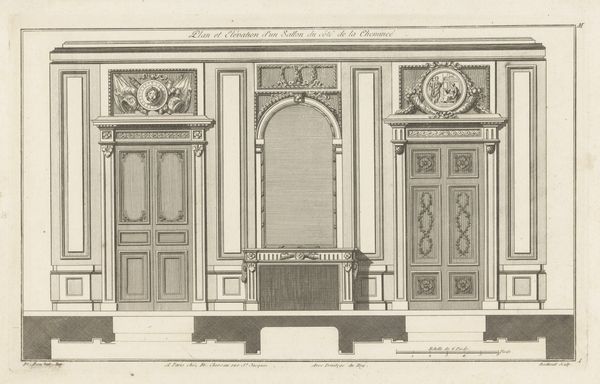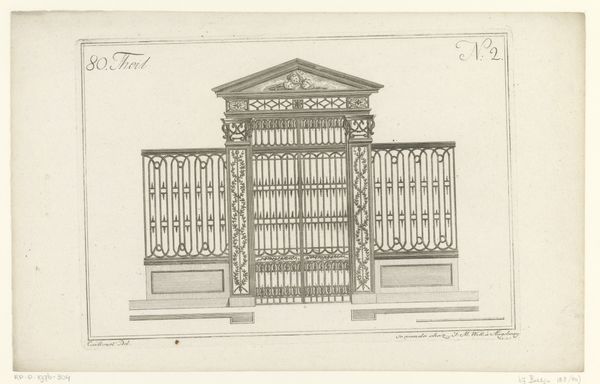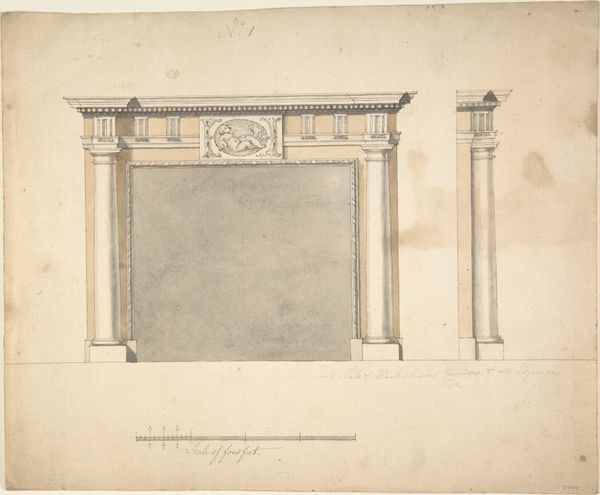
drawing, pen, engraving, architecture
#
drawing
#
baroque
#
form
#
geometric
#
line
#
pen
#
history-painting
#
engraving
#
architecture
Dimensions: height 176 mm, width 284 mm
Copyright: Rijks Museum: Open Domain
Georg Conrad Bodenehr etched these two window frames, a testament to Baroque architectural fashion. At the heart of this design lies a fascinating revival: the classical motif of the cartouche. See how the cartouche crowns each frame, a shield-like emblem ready to bear witness? Initially, these ornamental frames were used in ancient Egypt to hold hieroglyphs, symbols of royal identity and divine decree. The Baroque cartouche, however, evolved. No longer reserved for pharaohs, it became a canvas for personal or familial heraldry. In both forms, though, the cartouche is a symbolic declaration of power, an expression of status. It is this declaration which speaks across time to our collective consciousness. Even as its purpose and appearance have morphed, the primal urge to mark one's place in the world remains a potent, subconscious drive. Like a dream symbol, the cartouche reminds us that the past is never truly gone; it merely resurfaces, transformed, in the ever-turning wheel of history.
Comments
No comments
Be the first to comment and join the conversation on the ultimate creative platform.
